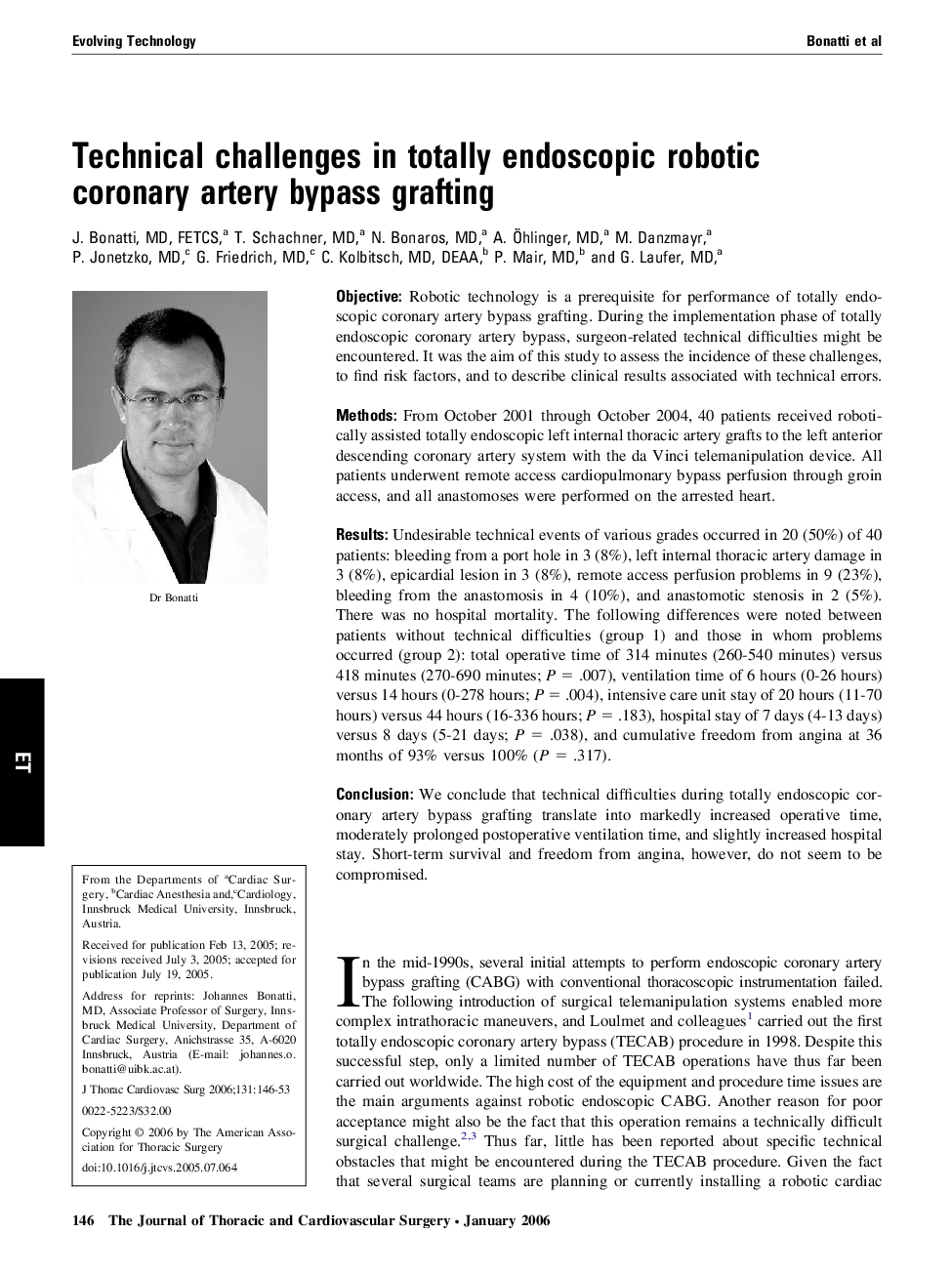| Article ID | Journal | Published Year | Pages | File Type |
|---|---|---|---|---|
| 2987218 | The Journal of Thoracic and Cardiovascular Surgery | 2006 | 8 Pages |
ObjectiveRobotic technology is a prerequisite for performance of totally endoscopic coronary artery bypass grafting. During the implementation phase of totally endoscopic coronary artery bypass, surgeon-related technical difficulties might be encountered. It was the aim of this study to assess the incidence of these challenges, to find risk factors, and to describe clinical results associated with technical errors.MethodsFrom October 2001 through October 2004, 40 patients received robotically assisted totally endoscopic left internal thoracic artery grafts to the left anterior descending coronary artery system with the da Vinci telemanipulation device. All patients underwent remote access cardiopulmonary bypass perfusion through groin access, and all anastomoses were performed on the arrested heart.ResultsUndesirable technical events of various grades occurred in 20 (50%) of 40 patients: bleeding from a port hole in 3 (8%), left internal thoracic artery damage in 3 (8%), epicardial lesion in 3 (8%), remote access perfusion problems in 9 (23%), bleeding from the anastomosis in 4 (10%), and anastomotic stenosis in 2 (5%). There was no hospital mortality. The following differences were noted between patients without technical difficulties (group 1) and those in whom problems occurred (group 2): total operative time of 314 minutes (260-540 minutes) versus 418 minutes (270-690 minutes; P = .007), ventilation time of 6 hours (0-26 hours) versus 14 hours (0-278 hours; P = .004), intensive care unit stay of 20 hours (11-70 hours) versus 44 hours (16-336 hours; P = .183), hospital stay of 7 days (4-13 days) versus 8 days (5-21 days; P = .038), and cumulative freedom from angina at 36 months of 93% versus 100% (P = .317).ConclusionWe conclude that technical difficulties during totally endoscopic coronary artery bypass grafting translate into markedly increased operative time, moderately prolonged postoperative ventilation time, and slightly increased hospital stay. Short-term survival and freedom from angina, however, do not seem to be compromised.
